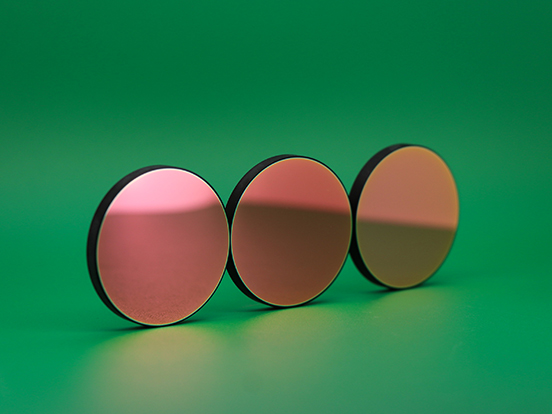Briefly understand the function and principle of optical filters
Oct. 14, 2024
As we all know, optical filters attenuate the intensity of light, change the spectral composition of spectral components and are optical elements used to select the desired band of radiation, and all filters have one thing in common, they can only make objects darker by absorbing certain wavelengths. So what do all these filters do for us in real life? What are the categories and applications?
Common Applications of Filters
Filters are very useful. Widely used in the world of photography. For example, with a camera to shoot a flower, the background is blue sky, green leaves, if you shoot according to the usual, you can not highlight the yellow flower as a theme, because the image of the yellow flower is not prominent enough. However, if you put a yellow filter in front of the lens, blocking part of the green leaves issued by the green light, blue sky issued by the blue light, and let the yellow flower issued by a large number of yellow light through, so that the yellow flower appears very obvious, highlighting the yellow flower this theme. Common filters are: infrared filters, interference filters, infrared cut-off filters, color filters and so on.
CLZ Optical Co., Ltd. is a manufacturer of optical components, mainly products including spherical lenses, optical domes, optical windows, filters, etc. Our Optical Filters combine plastic or glass substrates, dye, and vaporized optical films to deliver outstanding light control and precise filtering capabilities. Whether you require visible light, IR, or UV band filters, our range of Optical Filters guarantees exceptional performance and reliability. With their superior optical properties and durability, these filters are your perfect choice for various applications, offering unparalleled light manipulation for impressive results.
Infrared filters refer to the deep red filters used for infrared photography. The color even not too dark filtered light will have the corresponding effect. Infrared filters are mainly used in the field of security monitoring, infrared gas analyzers, night vision products, infrared detectors, infrared receivers, infrared sensors, infrared communication products. Specific to products such as: surveillance cameras, remote control, infrared curtain wall products, infrared sensor toilet, faucet, hand sanitizer device, infrared thermometer, infrared printers, infrared touch screen, fingerprint identification machine and so on.
Interference filters refer to filters that utilize the principle of light interference and thin film technology to change the spectral composition of light. Optical films that utilize the principle of interference to allow only light of a specific spectral range to pass through, usually consisting of multiple layers of film. Interference filters are available in a wide variety of types and for different purposes. Common interference filters are divided into two categories: cutoff filters and bandpass filters. Cutoff filters divide the spectral range into two zones, one in which light cannot pass (the cutoff zone), and the other in which light can fully pass (the passband zone). Typical cutoff filters are low-pass filters (allowing only long-wave light to pass through) and high-pass filters (allowing only short-wave light to pass through), which are multilayer dielectric films with a periodic structure consisting of alternating high-refractive-index and low-refractive-index layers.
Infrared cut-off filters are optical filters that allow visible light to pass through and cut off infrared light. Its function is to prevent the CCD image sensor from artifacts and ripples due to pixel spacing, and to improve the effect of infrared light on the CCD image.
A color filter is an optical filter that expresses color by precisely selecting a small range of light waves that it wants to pass and reflecting away other undesired waves. Color filters are usually mounted in front of the light source so that the human eye can receive light saturated with a certain color. There are infrared filters, green, blue, and so on. Compared with UV filters, VD filters, where the general term for filters with color. Such as contrast filters, filters for color separation, LB filters, and so on.
A polarizer, also called a polarizing lens, or PL lens for short, is a color filter. Polarizers work by selectively allowing light that vibrates in a certain direction to pass through, and are commonly used in color and black-and-white photography to eliminate or attenuate strong reflections from non-metallic surfaces, thereby reducing and eliminating light spots.

The funtion of Optical Filters
--Filtering infrared rays
Available coating methods and blue glass, coating is divided into vacuum coating and chemical coating methods, chemical coating is the quartz sheet immersed in solvent to be plated, low cost but the thickness of the coating is not average and easy to fall off, vacuum coating is a vacuum evaporation method, the coating is uniform and not easy to fall off, but the cost is high. Above we call IR Coating, the purpose is to filter out infrared rays, in addition to the so-called AR-Coating coating, the purpose is to increase the light transmittance. Because the light will be partially refracted and reflected when it passes through different media (e.g., from air to quartz), the filter can reach 98-99% transmittance after adding AR-Coating.
The other is to use blue glass, which filters infrared rays by absorbing them, while IR-Coating filters out infrared rays by reflecting them, but the reflected light tends to cause interference, so if you only consider filtering infrared rays, blue glass is a better choice.
Using the physical polarization properties of quartz glass, the incoming light, retaining the direct portion and reflecting off the oblique portion, can only be trimmed in one direction. Usually, he camera only takes into account the horizontal resolution, so only the light is trimmed horizontally.




















